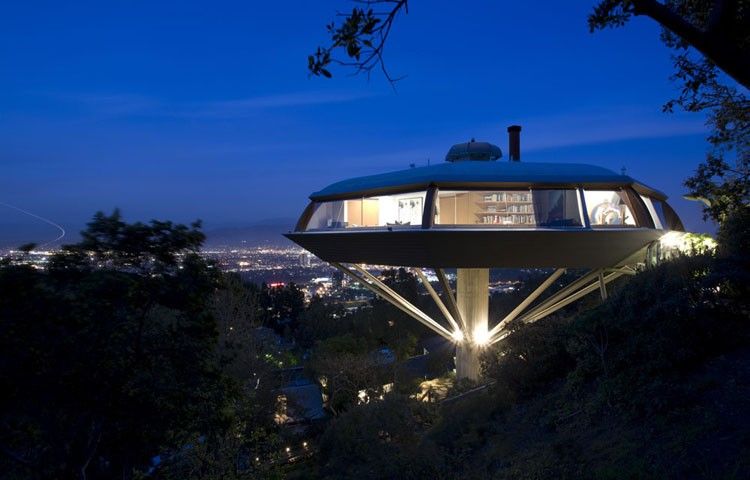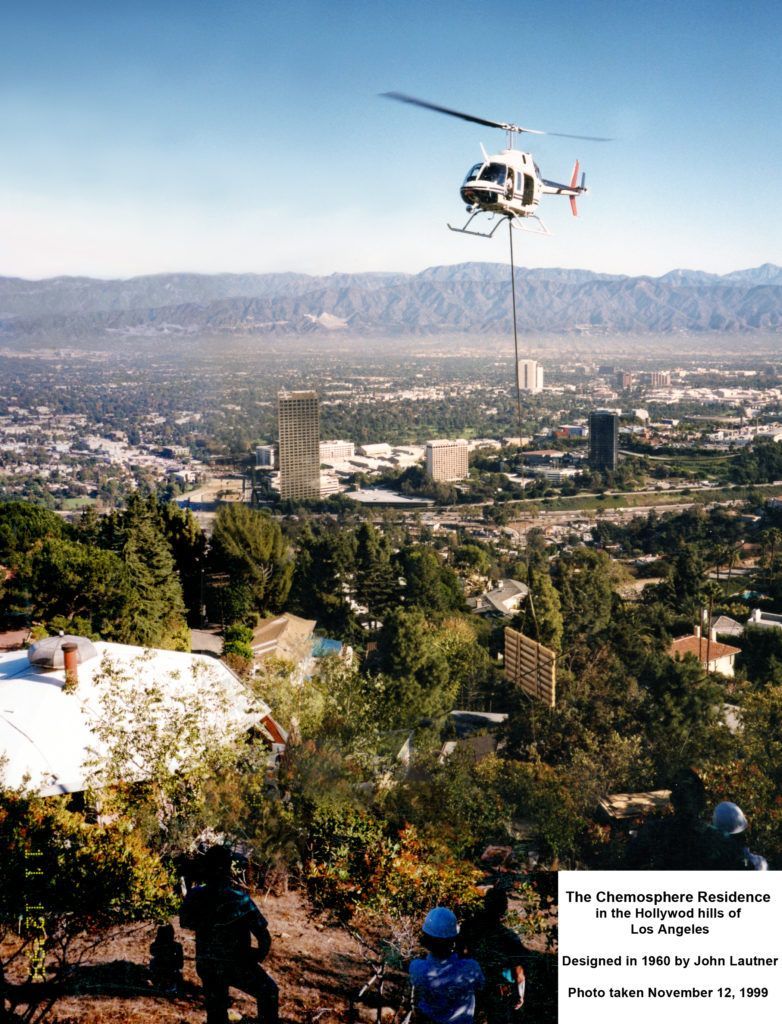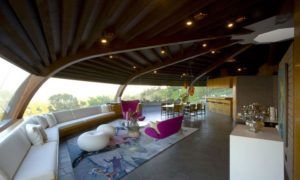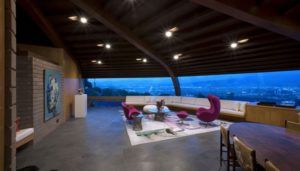
Giroux Glass, Inc. is privileged to work on many interesting and unique homes and landmarks in the Los Angeles area. But back in 1999, the team at Giroux got to work on one of the most unique residences that exists: the “Chemosphere.” Situated high in the Hollywood Hills, just off Mulholland Drive, the one-story home sits on a 45-degree hillside. Its octagonal shape atop a 29-foot-tall and 5-foot-wide column creates an image that is reminiscent of a giant flying saucer.
Originally built in the late 1950s for Leonard Malin, a young aerospace engineer, the building was then and is still a futuristic residence that is one of a kind. Malin was gifted the plot of land by his father-in-law. With limited funding, Malin turned to famed architect John Lautner to design a house that would work on the steep hillside. To keep his unique design standing, Lautner buried a pedestal, 20 feet in diameter, deep in the earth and attached to the visible column to stabilize the structure. It seems to have been an effective technique, judging by the many earthquakes and heavy rainfall it has since survived. The pedestal also reduced the building cost by removing the need for a retaining wall and allows the homeowners to leave the natural surroundings mostly untouched.

The Chemosphere’s structure is made of steel and timber, and the roof is supported by curved frames of laminated wood. The outer edge of the house is lined with windows to provide gorgeous views of the cityscape. The home got its name, “Chemosphere,” because of a company Malin bartered with, Chem Seal Corporation, that used experimental coatings and resins in the building. In exchange for their part in building the house, Chem Seal Corporation got to name the home and use it in their promotional materials.
The house is reached by two entryways: One is a walkway along the hillside toward the back end of the home, the other is a funicular, or cliff railway, that brings guests from the parking area below to the home above.
In 1998, after years of sitting on the market, German publisher Benedikt Taschen bought the octagonal home and began restoring it to its former glory. This is when Giroux Glass, Inc. was brought in. The original thick-framed windows that look out over the city were replaced with frameless glass, giving the viewer a wider, more unobstructed view. Because of the residence’s unique location and the challenging access to the home, the glass had to be flown in via helicopter, as there was no other feasible way to get the glass up there.
The restoration, which was overseen by Escher GuneWardena Architecture and also included removing layers of paint and adding paneling to the walls, won an award from the Los Angeles Conservancy. In 2004, the home was declared a Los Angeles Historic-Cultural Monument. In 2008, it was included in a Los Angeles Times list of the top 10 Los Angeles homes of all time. The home has been seen in movies and TV including an episode of The Outer Limits in 1964 and in the 1984 film Body Double. It inspired a set created for the 2000 film Charlie’s Angels, and can be seen briefly in the end credits to the 2015 film Tomorrowland.

If you are ever driving through the Hollywood Hills, keep an eye out for this historic architectural landmark – but don’t venture too close, because the home is private property!

